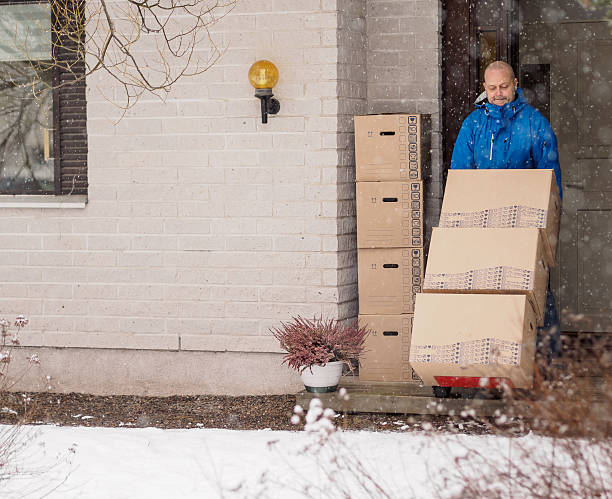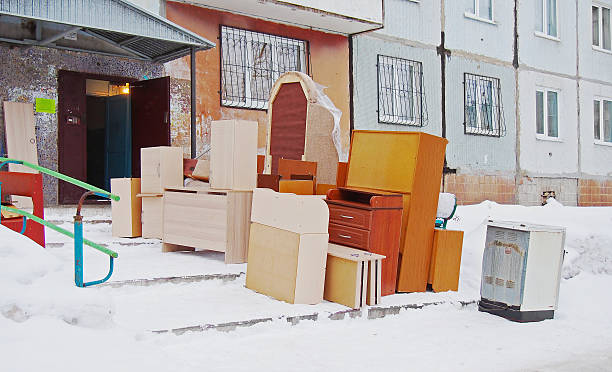10 Tips for Moving in Winters
Winters come with laziness, and the thought of moving in this season might draw a sigh. Moving is a very hectic task, let alone in winters. But, if you plan and prepare for it in advance, moving during the winter season can be easier than expected. Moving in winters is a great idea if you want to avoid the summer rush.
It can often be challenging to manage a move in the winter season. From potential plumbing or heating breakdowns to heavy snowfall, winters can bring many pitfalls for the unaware relocating family. However, with a few tips and tricks up your sleeve, you can avoid these common obstacles and make sure your move is an overall positive experience.

Read on for top 10 tips for making a smooth transition into your new home during snowy weather seasons.
Moving in Winters | 10 Essential Tips
Are you confused about how to transition smoothly while moving in winters? We truly understand your concerns and are here to help. Here are the tips that will make your move easier:
1. Be Prepared To Be Flexible
The moving industry saw a downfall in 2021 [1] due to the global pandemic, but in 2022 it’s expected to be back on track. The winter weather can be unpredictable, and cold temperatures make it difficult to start packing. One of the most important tips for making a winter move successful is to be prepared to be flexible.
After all, Mother Nature has her plans and isn’t always kind when moving in colder months. For instance, blizzards or other severe winter conditions may put your schedule temporarily on hold, or you may have to contend with icy roads that cause delays or make certain routes impossible.
By staying flexible and being willing to adjust on the fly if needed, you can help make the entire experience less stressful.
2. Allow More Time
Your plan can be delayed due to snow, heavy traffic, and bad weather. That’s why it is important to start planning for your move a couple of weeks ahead.
It would help if you also built extra days for packing, moving, and unpacking so that you don’t have to rush when the temperatures drop. This will reduce the time spent outdoors during the move and make the entire process much smoother.
3. Pack and Unpack Your Clothes Wisely
When you move in winter, you must pack warm clothes correctly. When packing sweaters, jackets, and other thick items, try to fold them into zip-top bags before putting them into suitcases or boxes. This will keep them safe and protected from any moisture or cold air.
Also, try to unpack your winter clothes first to prepare for the chilly weather. Hang heavy sweaters, coats, hats, and scarves on hangers immediately to be ready when you need them.

4. Protect Your Belongings From the Cold
Cold weather can be hard on any material and cause damage, so it’s important to protect your belongings. Wrap all electronics, furniture, and other delicate items with plastic sheeting or blankets to keep them safe from the cold air.
Also, ensure that you have a designated space or room where you can store these items as soon as they are brought in. You can also get insurance coverage to protect your belongings [2] from any damage.
5. Prepare Your Car For the Cold
Your car is the most important part of any winter move. Make sure to get it serviced before you hit the road and check that all fluids are topped off, tires are inflated correctly, and brakes are in good condition.
Additionally, ensure that your vehicle has enough gas to reach your destination without worrying about running out. Long distances may require extra fuel, so plan accordingly and get extra gasoline in an emergency.

6. Make A Moving Checklist
A moving checklist is the most important tool for planning a successful move. It will help you keep organized and ensure that nothing gets forgotten or left behind.
Make sure to include all tasks related to packing, loading, travel, unloading, and more in your list so that you don’t miss anything while getting ready for the move. Sometimes, a person in charge of the move is required, so make sure to assign responsibility for all tasks on your list.
7. Make Sure Your New Home Is Ready
When moving in winter, it is important to ensure your new home is ready for you. Have the utilities turned on, change the locks if needed, and ensure that all appliances function correctly.
If any maintenance work is required before you move in, try to get it done ahead of time so that you don’t have to deal with it when you arrive.
8. Don’t Make Last-Minute Changes
Moving in colder months can be unpredictable, and anything can happen. To ensure your move is successful, avoid making any last-minute changes or unexpected stops as much as possible. If something requires you to switch gears suddenly, try to keep it to a minimum and only do it if necessary.

9. Stay Active And Tension-Free
Taking care of yourself and your family is just as important when moving in winter as in any other season. To keep your spirits up and to stay tension free during the move, take some time out of your day to exercise and relax.
Have a meal with friends or family once you’ve reached your destination, and ensure that everyone is doing well before returning to the unpacking.
10. Use Professional Help
Whether it’s a residential move or moving a business, winter moves can be difficult and more time-consuming than usual. To save yourself from all the hassle, you should consider hiring professional movers with experience in the area. They will ensure that everything is done right and on time so you can focus on settling into your new home or office.
These tips can help make your winter move easier, smoother, and more successful. Make sure to plan and be prepared for any potential obstacles that you may encounter along the way. Be organized, and don’t hesitate to ask for help if needed.
FAQs
1. Is it better to move in winter?
Winter is the least expensive time to move as it’s when demand for movers is at its lowest. [3] It also happens that many people are on holiday break, so you may find housing more available than moving during the summer months.
2. Can winter weather affect my move?
Winter weather can certainly be an obstacle when moving. Heavy snow and icy roads can make the process more difficult, so it’s important to take extra precautions for your safety and that of your belongings.
3. Why should I prepare for a winter move?
Winter is an unpredictable time of year, so it’s best to be prepared. Be sure to check the weather forecast and plan accordingly. Make sure you have enough warm clothes and blankets for your moving crew and yourself.
References:
[1] https://www.move.org/moving-stats-facts/
[2] https://www.iii.org/article/protect-your-home-from-winter-weather
[3] https://www.move.org/when-is-the-best-time-to-move/




